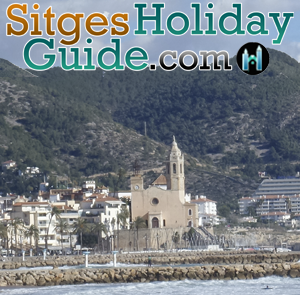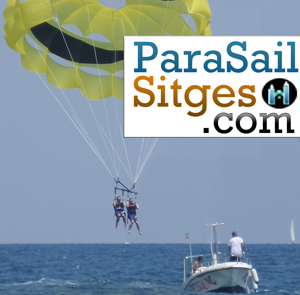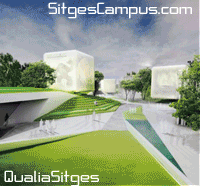The Sitges Campus Project is ‘Up in the air’
The original urban development was cancelled and alternatives are being considered.
After a “solid proposal” from the LIPA, Sitges Council plan a public competition to find the option which best fits the towns needs, a project which promotes employment, consumption, the town’s image and provides stability for the future.
Sitges reconsidering Paul McCartney’s university project for an Institute for Performing Arts
Differences with ‘Qualia Sitges’
The team from the previous city government, led by Jordi Baijet, was behind the ‘Qualia Sitges. Espai Creatiu del Mediterrani’ proposal which was designed to put the town at the fore front of the international creative economy [please refer to the related article]. Baijet’s team wanted the Qualia Sitges Campus to occupy an area of 100,000 square metres, situated between the Sitges Design Centre and the Can Robert Park. It would have been host to several parks, public facilities, schools and buildings dedicated to the innovation and promotion of artistic, business and cultural projects as well as serving as a space for education.
However, ultimately the construction of so many buildings was not viable, so Forn’s team has opted for a similar project that uses existing infrastructure and facilities such as the Sitges Design Centre. ACN’s source said that the development plan that would have run parallel to the university initiative is now “obsolete and has been reinvented” to focus on the main aims of the project. The project is being carried out by the Town Hall’s Service for Economic Initiatives and the Mayor’s office.
The project is progressing
The full municipal approval to begin the process Qualia Sitges. Espai Mediterrani Creatiu was declared at an event that attracted exceptional interest from the public.
By the State Government under the Law on taxation of non-profit entities and tax incentives Patronage (Law 49/2002).
When this statement is approved and included in the State general budget, companies or individuals will be able to sponsor the Sitges Qualia Campus and benefit from tax incentives. However, before the declaration of the State Government, the Government of the Generalitat and the Catalan Parliament will have support in the form of non-legislative proposal..
Espai Creatiu of Mediterrani, a Foundation geared for the objectives and purposes of Qualia Sitges, was also formed. This will begin the participatory process for it to act as a civic foundation with private organizations as an autonomous and independent group, made up of citizens, companies, associations or other groups, with the objective of meeting present and future needs of the project.
Finally, the document detailed the selection criteria and terms for companies that wish to use the new Centre d’creative Businesses Centre.
In this same document also describes the objectives of the project, what are the procedures for selecting firms and awarding offices, and the rights and duties of companies finally selected.
Business can attract talent
Interview with Jordi Baijet, Mayor of Sitges : 10/11
“Profitable business decisions, can also attract talent”
Sitges is one of the pioneers in the Spanish city of business tourism through the construction of the Auditorium in the 90’s. The municipality is currently preparing an ambitious plan for tourism, the “City Project”
- To remain a tourist destination of excellence and quality. Within the ‘City of Barcelona’
- Rehabilitation and conservation of the old town and the underground train line
- Redevelopment of certain historic hotels (e.g. Terramar, a landmark hotel opened in 1928). Unique architectural sites that have attracting creativity, art, culture and values.
-Tell us about the “City Project” in Sitges. How and why did the idea?
- Arises from the need to have a clear idea of the city we want the short, medium and long term
- Generate economic prosperity, jobs and promote quality of life they want all citizens.
- Maintain the image that Sitges has traditionally broadcast around the world as a location with human qualities and quality of life.
– What are the objectives to be achieved?
- Main objectives of economy, quality and society via specific short and medium term goals
– How does tourism fit?
- In Sitges we remain a tourist destination of excellence and quality. But since the 90’s competition has changed a lot.
- Sitges has very good infrastructure and leading hotels, but we think we can complement this offer with smaller hotels, with more charm, which promotes culture, art and creativity and that this may also attract business.
- We want the congressman to come here find a more sensitive and human, with good weather, good food, sensitive to culture and art that has found synergy of talented people in the township. Because we believe that talent can also attract business.
-The initiative to attract that talent. Tell us about them.
- Yes, We thought of open spaces not only as a cultural center but somewhere to encourage new creative economic activity
- Attraction via training, economic activity, creation and small hotels can be such an environment where everything has a life. Sitges is a very good living space to create, think, ponder and have ideas. So believe in what we might call tourism ideas. And ideas are in a good environment.
– What common characteristics have these spaces?
- The Caus Ferrats all build on public land.
- Facilities where people can live, that is, small hotels will but with the peculiarity that the doors will open to participation, creation and reflection
- Be architecturally unique buildings and therefore should be created by architects with personality
- Financially autonomous
-The renovation of the historic center is one of the milestones that have been proposed. Sitges is an important cultural context … How will you promote it?
- For the old town, in what was the center of town 30 years ago, we have a project called “L’espai of the Mediterranean
- To rehabilitate these areas by providing them with value.
-The “creative economy” is just one of the slogans of the campaign to promote Sitges. What is?
- Part of the idea of the economist Richard Florida that future cities will be developed according to their creativity.
- The way to survive in a globalized world is by being creative
- Sitges has been historically a place that has attracted artists and creators and we want to remain so.
- The environment influences the creativity and, in turn, generates a creative class economy and indices of emotional stability of the city very interesting.
-In your opinion, what makes Sitges a place to hold events?
- First, it’s the nature of (Sitgeans) citizens to be hospitable, tolerant, active, and knowing how to use these values to generate an economy
- We have this magical setting and our special micro-climate.
- To all this must be added an economic movement around the talent, good food and services.
____________________________________________________
The performances of the “City Project”
There are five main areas. Protection of heritage:
- The Old Town, including the boardwalk and the beach of Sant Sebastia. It is intended that this space is an excellent human being, zero emissions and generate economic activity. The challenge is to get the nightlife and the rest of the people can live together in the same area. “This environment has to be a powerful cultural dynamic, a protected area in terms of aesthetics, landscape, environment and also to be a civic space where people, commerce and economic activity coexist,” said Baijet
- Underground train line that breaks in Sitges in half. The burial will earn new spaces in what has been called “A hug the sea” and a breeze of 90,000 m2 which will go from one end of town, that is, between the Hotel Terramar to Port d’Aiguadolç.
- Recovery of quarries in the Parc Natural del Garraf to reconvert them to more sustainable usage.
- Renovation of hotels
- Develop the creative economy through the construction of some new hotels that promote the attraction of artists and creators. This was taken as a model of the legendary Cau Ferrat.
|
Interview with Jordi Baijet, Mayor of Sitges
“The business can attract talent”
• Sitges is one of the pioneers in the Spanish city of business tourism through the construction of the Auditorium in the 90
The municipality is currently preparing an ambitious plan for tourism, the “City Project”
Sitges facing new challenges in order to remain a tourist destination of excellence and quality. Within the “City Project” provides activities such as rehabilitation and conservation of the old town, the underground train line, the redevelopment of certain hotels emblematic or the construction of twelve Ferrats Caus. Unique architectural sites that have attracting, according to Mayor Jordi Baijet, creativity, art, culture and values training … all in that Sitges has been based on historically and will continue to develop the future of the municipality.
-Tell us about the “City Project” in Sitges. How and why did the idea?
The “City Project” arises from the need to have a clear idea of the city we want the short, medium and long term. We know that every objective is to generate a city economy, create jobs and promote quality of life they want all citizens. In the XXI century Sitges you need is to generate economic prosperity for its people, maintain the image that Sitges has traditionally broadcast around the world and a city with human qualities and quality of life.
– What are the objectives to be achieved?
The “City Project” is an idea of our town long term the main objectives of economy, quality and society. Following this project we generated a series of more specific short and medium term will allow us to meet these challenges we have set.
– What does it matter lace and congress tourism in these performances?
In Sitges we were lucky that between 90 and 95 play to be a tourism business, because the first audience of Catalonia was made here, and we remain in the s. xxi a tourist destination of excellence and quality. But since the 90’s competition has changed a lot.
Sitges has very good infrastructure and leading hotels, but we think we can complement this offer with smaller hotels, with more charm, which promotes culture, art and creativity and that this may also attract business. We want the congressman to come here find a more sensitive and human, with good weather, good food, sensitive to culture and art that has found synergy of talented people in the township. Because we believe that talent can also attract business.
-The initiative to build these cultural centers, “Caus Ferrats XXI century” will have a fundamental importance in order to attract that talent. Tell us about them.
Yes We thought of open spaces which are not only cultural center but can sleep in them and where they encourage new economic activity that is creativity. So we thought the model Cau Ferrat. The Cau Ferrat in Sitges and only there was a space in the last century was of great importance for the municipality. It was a dynamic element of modernism and the change of our people who until then was a town of sailors, fishermen and vineyards.
We want to create a Ferrats century Caus xxi where we can tackle the art and culture of life and must be poles of attraction training, economic activity, creation and small hotels can be such an environment where everything has a life. Sitges is a very good living space to create, think, ponder and have ideas. So believe in what we might call tourism ideas. And ideas are in a good environment.
– What common characteristics have these spaces?
The Caus Ferrats all build on public land. We have projected a total of twelve with the idea that each month to take ownership of them. All share three key concepts: are facilities where people can live, that is, small hotels will but with the peculiarity that the doors will open to participation, creation and reflection. Second, be architecturally unique buildings and therefore should be created by architects with personality. And third will be financially autonomous. The project began with the acquisition of Audi Design Center, a landmark and we thought of making it the Cau Ferrat Cities. Why the city? Because we believe that cities are the most important element of this century of social, economic and human development. And so we thought this building as a place to think about the city and creativity.
-The recovery of the historic center is one of the milestones that have been proposed. Sitges is an important cultural context … How will you promote it?
For the old town we have a project called “L’Espai of the Mediterranean.” It is content to fill a number of buildings in what was the center of town 30 years ago. It is a privileged environment where aesthetically and generated the Cau Ferrat. But over time some of these buildings have lost content. Therefore, the Council has decided to rehabilitate these areas by providing them with value.
-The “creative economy” is just one of the slogans of the campaign to promote Sitges. What is?
Part of the idea of the economist Richard Florida that future cities will be developed according to their creativity. This is a good idea to tune the plans for the future of the town. The way to survive in a globalized world is by being creative. Sitges has been historically a place that has attracted artists and creators and we want to remain so. The environment influences the creativity and, in turn, generates a creative class economy and indices of emotional stability of the city very interesting.
-In your opinion, what makes Sitges a place to hold events?
First, does the large capacity of citizens to be hospitable, tolerant, active, and knowing how to use these values to generate an economy. We appreciate more intangibles than for tangibles. The only important thing is tangible that we have this magical setting and our special microclimate. To all this must be added an economic movement around the talent and the food very active and very bold company.
____________________________________________________
The performances of the “City Project”
There are five main areas. The first is the protection of heritage: the Old Town, including the boardwalk and the beach of Sant Sebastia. It is intended that this space is an excellent human being, zero emissions and generate economic activity. The challenge is to get the nightlife and the rest of the people can live together in the same area. “This environment has to be a powerful cultural dynamic, a protected area in terms of aesthetics, landscape, environment and also to be a civic space where people, commerce and economic activity coexist,” said Baijet. Another major challenge is the underground train line that breaks in half Sitges. The burial will earn new spaces in what has been called “A hug the sea” and a breeze of 90,000 m2 which will go from one end of town, that is, between the Hotel Terramar to Port d’Aiguadolç.
Third is the recovery of quarries in the Parc Natural del Garraf to reconvert to other economies more sustainable.
Then there is the renovation of hotels. A clear example is the Terramar, a landmark hotel opened in 1928, located in a strategic city, which is to host the Festival of Fantastic Film century xxi, thanks to a new audience. Next to the golf course and the Autodromo de Sant Pere de Ribes is able to generate new economic activity and help attract business tourism.
Finally, we want to develop the creative economy through the construction of some new hotels that promote the attraction of artists and creators. This was taken as a model of the legendary Cau Ferrat.
Commercial Investment
As the project commences, it will become clear where investment and opportunities exist to bolster the public funds available. This may be in developing the site or the provisioning of services and equipment.
As always, it will follow the procedures set down by local and national government for such procurement.
Please subscribe at the foot of this page, for updates, as we hear of them.

Closing of the exhibition Qualia Sitges
Sitges, 2 February 2011.
Over 800 people visited the exhibition Qualia Sitges. Creative Mediterranean Area
Over 800 people visited the exhibition Qualia Sitges. Creative Mediterranean area, located in the Plaza del Ayuntamiento s / n.
The exhibition was opened during a first period from 20 November to 12 December, but with some requests from people who were not in time to see it, has reopened over the weekend of January.
During the first month of opening, nearly 600 people visited and reviewed the project, Qualia, and during the second opening, more than 200 people arrived.
The exhibition served to teach and explain the project to citizens, but also to gather concerns and suggestions of all stakeholders. Therefore, this action is included in the set of initiatives undertaken to explain the project to Sitges and Sitges, artists and people with cultural interests, and capable business people and entrepreneurs to become involved in the initiative.
The actions undertaken to participate include presentations sector, led by the Mayor of Sitges, George Baijet, and meetings with different groups that have requested such as the Hospitality Association of Sitges ol’Associació beaches of Sitges, among others. Besides, who wants more information or to express any concerns regarding the project may do so by sending an e-mail info@qualiasitges.cat .; Address where it received over 80 requests and suggestions from individuals or companies.
The current government team has decided to bet on the economy of creativity through the project Qualia Sitges. Creative space for the Mediterranean on one side, is a way of recovering transgressive spirit that has characterized Rusiñol Sitges from the late nineteenth century as a magnet for artists and entrepreneurs, and the another because the Village Council, in its consultation process, expressed as a priority for the future, promote education and develop innovative economic activities.

 Unfortunately this project may have been shelved. "SitgesCampus.com is a website dedicated to promoting Sitges to tourists and students from across the world. Located in Garraf, near Barcelona in Spain, Sitges QUALIA Campus looks to be an excellent location to learn and innovate".
Unfortunately this project may have been shelved. "SitgesCampus.com is a website dedicated to promoting Sitges to tourists and students from across the world. Located in Garraf, near Barcelona in Spain, Sitges QUALIA Campus looks to be an excellent location to learn and innovate". 





